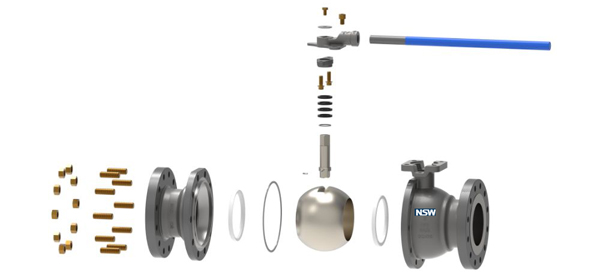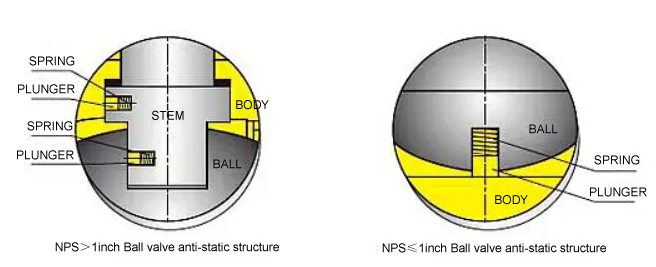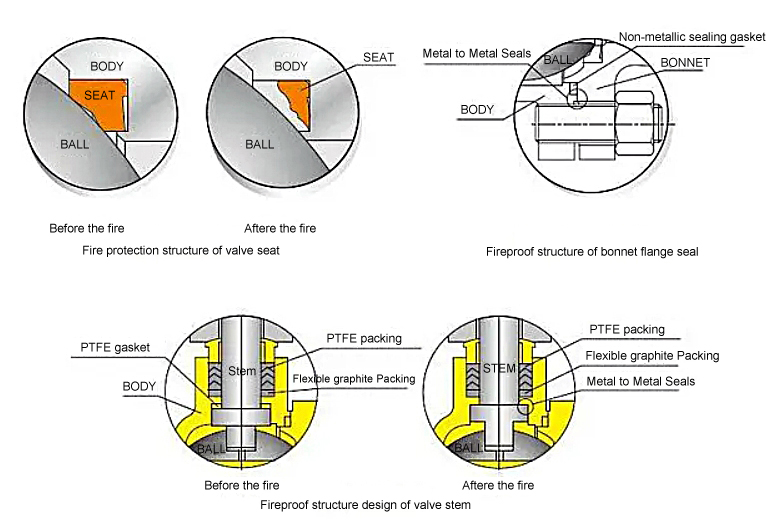What is a Floating Ball Valve
A floating ball valve is one of the types of ball valves, and the corresponding one is trunnion mounted ball valve. The features an unsupported ball held only between two sealing seats. The stem connects flexibly to the ball, allowing it to “float.” Under medium pressure, the ball displaces toward the downstream seat, creating a tight seal on the outlet side.
Key Components
• Ball Valve Body/Bonnet: The main pressure-bearing parts of the valve
• Ball Valve Ball: Free-moving sphere with bore
• Valve Stem: Transmits torque to the ball
• Seats: Dual sealing surfaces
• Seals: PTFE or reinforced composites

Technical Specifications
| Parameter | Range |
|---|---|
| Size (DN) | 15 – 800 |
| Pressure (PN) | 1.6MPa – 32.0MPa |
| Connections | Threaded (int/ext), Flanged, Welded, Wafer, Clamp |
| Temperature | -196°C to 550°C |
| Actuation | Manual/Pneumatic/Electric |
| Materials | Cast/Carbon/Forged Steel, Stainless |
| Standards | GB, DIN, API, ANSI |
Engineered Structural Features of Floating Ball Valve
1. Dual-Sealing Seat Design
Proprietary low-friction seat machining reduces operating torque while ensuring zero-leakage performance through bi-directional sealing.
2. Alignment-Proof Stem
The flats-cut stem prevents handle misalignment. Parallel handle = Open; Perpendicular handle = Closed.
3. Safety Locking Holes
Dual lock holes at full open/closed positions prevent accidental actuation—critical for hazardous pipelines.
4. Blowout-Proof Stem
An integrated shoulder prevents stem ejection during overpressure events, maintaining seal integrity.
5. Anti-Static System
Grounding springs discharge friction-generated static electricity—essential for flammable media like LNG or propane.
6. Fire-Safe Construction
Metal-to-metal backup seals engage during fires:
• Ball/body contact replaces burned seats
• Graphite fire seals expand to block leaks
• API 607/6FA compliant
7. Zero-Leakage Body Joint
Interlocking flange design eliminates gasket dependency, preventing external leakage under extreme conditions.
Industrial Applications
• General Service: Water, solvents, acids
• Critical Media: Oxygen, H₂O₂, methane
• Harsh Environments:
Petrochemical plants
Natural gas pipelines (H₂S resistant)
Cryogenic systems
High-corrosion slurry transport
Floating Ball Valves Advantages vs. Limitations
Pros:
✓ Compact maintenance-friendly design
✓ Bubble-tight sealing
✓ Low flow resistance
✓ 90° quick operation
Cons:
✘ Seat friction limits high-P/T use
✘ Not for slurries (risk of groove clogging)
✘ Requires skilled installation
Installation & Maintenance Protocols
Installation Requirements
• Mount horizontally on level surfaces
• Avoid flow turbulence near ball
• Ensure unobstructed access
Maintenance Checklist
• Quarterly: Inspect ball/scraper rings for erosion
• Annually:
Lubricate stem bearings
Verify torque values
Test emergency seals
• Post-shutdown: Clean cavity to prevent crystallized deposits
Floating vs. Trunnion Mounted Ball Valves: Technical Comparison
| Aspect | Floating Type | Trunnion Mounted Type |
|---|---|---|
| Sealing Principle | Media pressure pushes ball to seat | Springs force seats toward ball |
| Mounting | Single top stem | Dual trunnion-supported |
| Pressure Rating | ≤Class 1500 (DN300 max) | Up to Class 2500 (DN1500+) |
| Applications | Low-mid pressure systems | Pipeline mainlines (e.g. West-East Gas Project) |
Selection Guidance
Choose floating valves for cost-effective, compact solutions under Class 600. Opt for trunnion-mounted valves when handling:
• Pressures >Class 900
• Frequent cycling operations
• Cryogenic or erosive media
Post time: Dec-10-2024








